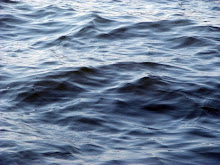
On November 1, 2008 the Charles W. Morgan was hauled out for extensive restoration. It was predicted to take between 3 to 5 years to complete.

The Charles W. Morgan is the last surviving wooden whaling ship from the great days of sail. Built in 1841 in New Bedford, MA, the Morgan had a successful 80-year whaling career. She made 37 voyages before retiring in 1921.
When finished the plan is to take the Morgan on her 38th voyage and sail her back to New Bedford.
I (Carl, ed.) joined Mystic Seaport’s volunteer crew in late July of 2009 and was asked if I would like to work on the Morgan. My job is to scrape paint. Certainly not a glamorous job, but it needs to be done.

During the last six months while I have been scraping paint, I have been taking pictures, and sending them in e-mails to friends who are on my “Victim List.” I sent them to a couple of Mystic staff members and now I have a new job. I will continue to scrape paint and in my new job I will try to show what is going on behind the scenes where visitors can not go.
These pictures are from the day the Morgan was hauled out in Mystic’s Henry B. duPont Preservation Shipyard.
So to start off with, here is the paint scrapping we have been doing. We started with heat but quickly found that all the paint contains lead. Now we use Peel Away which is much safer for everyone.

The bilge is an area where the bulk of the restoration is taking place. The ceiling and frames are being evaluated and replaced as needed. The bilge is an area that has never been available to visitors to Mystic Seaport.

All of the knees have been removed in the bilge area except those replaced during another restoration back in the 80's. The white I beams overhead are holding up the deck above. They are tied into the main deck with steel rods for support. They are also used as rails for a gantry which is used for hauling heavy timers in and out of the hull.


Here you can see the ends of the futtocks are rotted. The ceiling is only partially removed here and it is not in the best condition either. To the best of the seaports knowledge, this is all original to 1841 and no one has seen this part of the ship since then.

There are numbers all along both sides of the Morgan.
They are used in conjunction with a laser, I’m not up on this right now but it has something to do with keeping the ship straight and true. As the hog is removed more than just the keel will move so I guess this is part of that project.
Here, in the pictures below, the old numbers are being replaced because the sun has faded the original numbers. The fellow in the picture told me that each number lines up with a frame inside the hull.

There has been some progress on the framing inside the hull.
Here a shipwright is taking measurements and fabricating a template of the old futtock.

These are the knees that have been removed so far. They will be replaced with new knees made from live oak. Knees are used to support 90 degree joints such as where the deck ties into the hull. They are cut from a part of the tree that has the grain growing in the desired shape. Where the root and trunk meet is a good source. Another place is where a large branch forms.
 This is one template made to replace a knee. Every knee and every template are numbered so they go back where they belong.
This is one template made to replace a knee. Every knee and every template are numbered so they go back where they belong.
The yard cuts all the wood it needs with various saws. Here they are cutting stock for frames and knees.



When I was involved with sports cars years ago and was rebuilding an engine there was a special moment when the ratchet wrench lever was switched to tighten bolts rather than loosen them. At that point all the prep work was done and dreams of sunny days with the top down were soon to be realized.
The Morgan has reached that small milestone. After a long winter of prepping the ship for new frames, the first futtock has been installed.
Months of carving out the rough shapes from giant logs which will eventually become futtocks continues. The yard is filling with these blanks.

Work on the Morgan is moving along.
Frames have been replaced on both port and starboard sides.
This is starboard looking aft.

Inside the 500 lb futtock is lifted into place.
All photos and captions courtesy Carl Swebilius , Mystic Seaport and the WoodenBoat Forum
To be continued...
Here's what Mystic Seaport say's about the Morgan:
"The Morgan is comparable to many whaling ships of the time: 105' on deck, 133' overall. Her beam (width) is 27.7' and her draft (depth) is 12.6 feet, although fully loaded she could draw as much as 17.6', her registered depth. Her displacement (weight) is 313.75 tons.
Her longest voyage was four years and 11 months, while her shortest was 'only' eight and a half months.
The Charles W. Morgan is the last surviving wooden whaling ship from the great days of sail. Built in 1841 in New Bedford, MA, the Morgan had a successful 80-year whaling career. She made 37 voyages before retiring in 1921, and was preserved as an exhibit through the efforts of a number of dedicated citizens. After being on display in South Dartmouth, MA, until 1941, she came to Mystic Seaport, where each year thousands of visitors walk her decks and hear the fascinating story of her career as a whaling vessel, historic exhibit, film and media star, and a porthole into America's rich history."
Some numbers:
The Charles W. Morgan slid out of Jethro and Zachariah Hillman's shipyard in New Bedford, MA, on July 21, 1841.
She took 7 months to construct with 31 men working on her.
She cost $26,877 to build and another $25,977 to outfit for her first voyage.
She was 113 feet long and classed as a 351 ton whaling ship.
Her beam was 27-feet, 6-inches with a 17-foot, 6-inch depth.
Her main truck was 110 feet above the deck.
The sail capacity was over 13,000 square feet.
She carried 4 whale boats (later a fifth was added).
The Morgan typically carried a crew of 30 to 36 men.
Her cruising speeds could reach over 9 knots.
Nat Arata, VP of Development at Mystic, and my liaison for this project, along with Carl Swebilius, the volunteer who is telling the story, sent this answer to my query about what the costs from 1841 equated to in current dollars, just for some perspective. The question was answered by another VP at Mystic, Paul J. O'Pecko, Vice President, Collections and Research Director, G.W. Blunt White Library,Mystic Seaport:
"According to the website Measuringworth.com, $1340000.00 in the year 2009 has the same 'purchase power' as $52854 in the year 1841.
Another historical currency converter says 52854 dollars in 1841 had the same buying power as 1.31908712e+6 current dollars. So very close, somewhere near 1.3 million dollars."
I visited the Morgan this summer during the WoodenBoat Show this summer and have to say she is the imposing presence on the Seaport's waterfront. Out of the water as she is, the word that comes to mind is massive. Definitely worth the trip.
Editors note. I am endeavoring to keep the flavor of Carl's posts to this thread by not editing his captions. Note that I have not, by any means, used all of his work. It's all there on the thread.
This is just the first of three posts on this voluminous thread, More to come...














2.JPG)





















4 comments:
Always enjoy your blog. Great post as always. I am involved in a similar wooden ship rebuild project here in Ireland - http://www.bigboatbuild.com
Gary Mac Mahon
fantastic reportage! i look forward to following the progress. any sense of a re-splash date?
Hello Thomas! I quoted your blog today, look!
http://estreladalvacabofrio.blogspot.com/2011/02/blogs-maritimos-blogosfera.html
Good winds!
Fernando Costa
Outstanding post. Tugster summed it up: Fantastic reportage.
Post a Comment